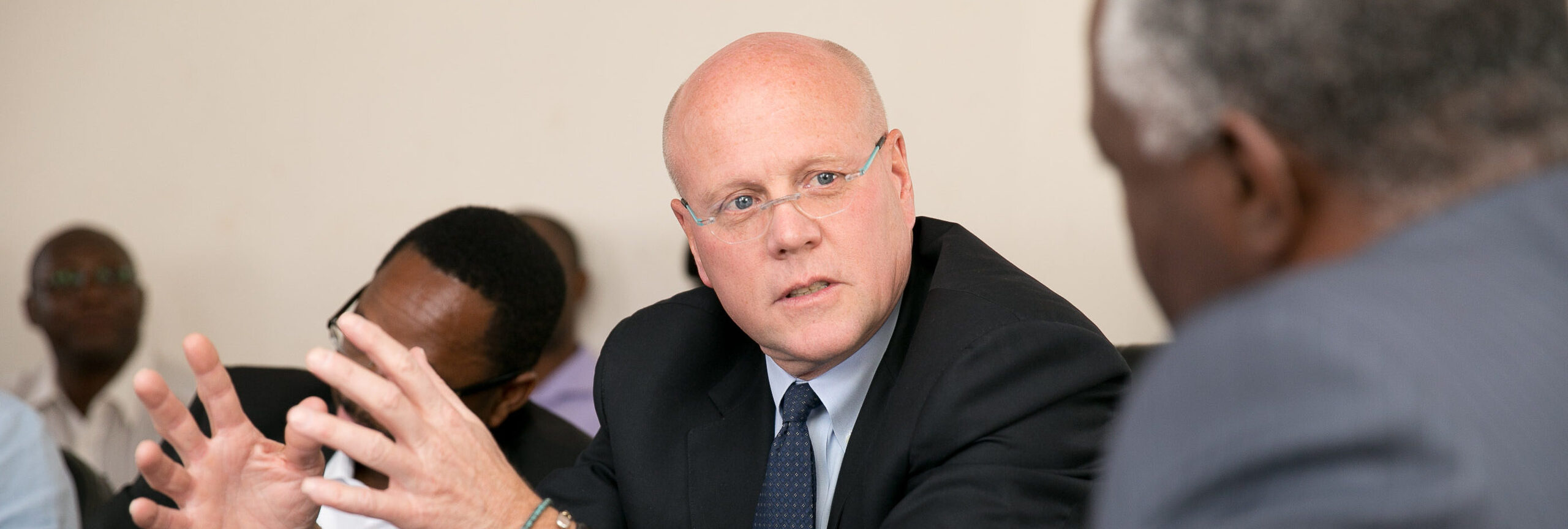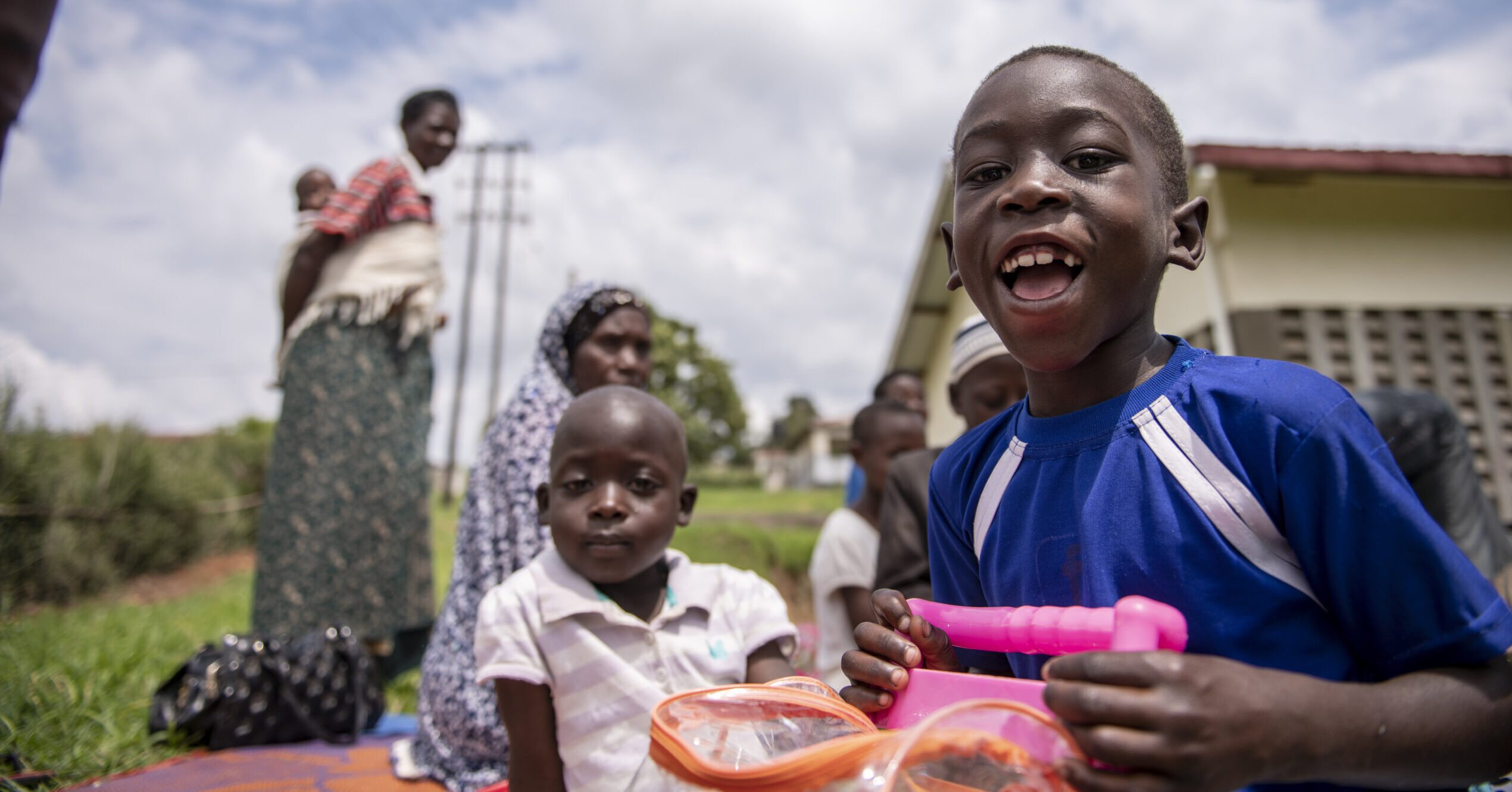Chairwoman Lee, Ranking Member Rogers, and distinguished Members of the Subcommittee, thank you for the opportunity to submit testimony in strong support of the foreign affairs budget, in particular the President’s Emergency Plan for AIDS Relief (PEPFAR) and the international organizations and partners critical to its success. My name is Charles Lyons, and I am the President and CEO of the Elizabeth Glaser Pediatric AIDS Foundation (EGPAF). EGPAF is committed to a comprehensive response to the global fight to end HIV and AIDS through research, global advocacy, strengthening local health care systems, and growing capacity of governments and communities in the world’s most affected regions to respond to urgent needs. I am proud to be leading a mission-driven organization, working closely with families, communities, countries, and donors fighting for an AIDS-free generation. I am asking you today to not only continue robust funding to end the global HIV/AIDS epidemic, but also to ensure that children are at the forefront of the U.S. global AIDS response. Additionally, I ask for additional robust U.S. global health investments to address the COVID-19 pandemic and set countries on the right path for long term success and sustainability.
Our organization was founded over thirty years ago out of a mother’s grief of losing her daughter Ariel to AIDS and her determination that more mothers would be spared the same tragedy. Because of the advocacy and strength of Elizabeth and other fierce activists who seized the moment, children were elevated in research and programming in the United States. Due to these tremendous efforts, pediatric HIV cases domestically are thankfully rare. Since our inception in 1988, there has been a 95 percent decline in new pediatric HIV infections in the United States. Globally, however, there is a different story.
It is without a doubt that the work to reach pregnant women with and at risk for HIV is one of the greatest success stories of the PEPFAR program and the global AIDS response. Public and private donors, ministries of health, advocates, global and local partners joined together to ramp up political will and attention to HIV positive pregnant women and led to a 68 percent increase in prevention of mother-to-child transmission of HIV services between 2010 and 20201, and a more than 50 percent decline in new pediatric infections since 2010. But for the past 5 years the number of women reaching services has remained steady2, meaning almost no new progress in driving down new HIV infections in children. Political leadership and attention for children has come in fits and spurts. This has led to incredible gains, frustrating plateaus and even declines in the efforts to prevent and treat new HIV infections in children. Unimaginable inequalities still exist for this incredibly vulnerable population, as outcomes persistently lag behind those for adults living with HIV.
While the number of children accessing lifesaving treatment has increased by 36 percent since 2010,3 concerningly in 2020 there was actually a decline in the number of HIV positive children on treatment4. These decreases are especially troubling because without treatment children become sick and die much more quickly than adults with HIV. Half of children infected with HIV during pregnancy and breastfeeding will die by the age of two and 80 percent by the age of five. Appallingly, children are 5 percent of new HIV infections, but 15 percent of deaths5. This gross inequality has only been exacerbated by the dueling COVID-19 and HIV pandemics, where adult HIV treatment held steady or even increased.
As a long term PEPFAR implementing partner working across 17 countries, we innately understand the challenges in reaching children and their families with the critical services to prevent and treat new HIV infections in children. To date, EGPAF has supported over 15,000 sites to offer HIV counseling, prevention, diagnosis, and treatment services alongside high-quality family health care. We have worked hand in hand with PEFPAR, local governments and partners to adapt programming as new tools and innovations have become available and share knowledge across sub-Saharan Africa. Never has this been more important than while also responding to COVID-19. With decades of experience confronting devastating pandemics, and strong collaboration with local ministries of health, EGPAF quickly adapted to support the COVID-19 response in sub-Saharan Africa. EGPAF continues to prioritize the safety of health workers and patients, while ensuring that vulnerable communities have access to life-saving HIV and tuberculosis services alongside COVID-19 mitigation efforts. EGPAF and PEPFAR’s ability to be nimble and resilient through program shifts, like multi-month dispensing of HIV medications and greater efforts to bring services out of the clinics and into communities, ensured results for children and their families were not as dire as predicted in the spring of 2020. Many of these programmatic shifts came at a cost and required substantial financial and human resource investments.
Unless we continue strong surveillance and service delivery innovation, the virus will fill the void. Ten years ago, we were anticipating an “AIDS-free generation”, today we are working to keep progress from slipping away. PEPFAR is no longer including data on children in their Population-based HIV Impact Assessment Studies (PHIAS), despite the fact that previous PHIA data on children has proven invaluable in identifying and addressing key gaps in pediatric treatment and viral suppression. The removal of pediatric specific data from the PHIAs means that there is less information about the pediatric care and treatment cascade, thereby limiting the ability of PEPFAR and other stakeholders to incorporate that data into programmatic decision-making processes. Furthermore, children were completely absent from the last PEPFAR strategy6—a disheartening signal about their significance to program outcomes and an incredible missed opportunity. It will be unconscionable if the next five years of the PEPFAR program does not prioritize ending AIDS for people of all ages. We respectfully ask you to use your considerable influence to express to the Office of the Global AIDS Coordinator that Congress insists children are prioritized within the PEPFAR program.
The PEPFAR platform dramatically changed the global health landscape thanks to strong bipartisan support nearly 20 years ago. Analysis after analysis shows that its results expand far beyond the treatment cascade and new infections averted. A recent study by the Kaiser Family Foundation (KFF) found that PEPFAR investments were shown to significantly reduce both maternal and child mortality, relative to what would have been expected in PEPFAR’s absence. Based on their estimates, the child mortality rate was reduced by 35 percent and the maternal mortality rate was reduced by 25 percent. Additionally, as the U.S. works to respond COVID globally, the PEPFAR platform’s physical infrastructure and human resources have been instrumental. EGPAF supports smartly leveraging the platform to maximize lives saved, but we also urge you to not let its core mission become diminished. As we are reminded daily through our programmatic work, there is still a long way to go until the end of AIDS. We believe there is a balance to be found between a strong core global HIV response and leveraging the PEPFAR platform for emerging health threats, without diluting the program.
PEPFAR has been nearly flat funded over the last 10 years. Innovations and efficiencies have led to growth of the program, but increased resources are necessary as the program responds to COVID-19, charts a recovery agenda, and accelerates towards HIV goals and targets. I urge you to increase funding for the PEPFAR program, and support its role as the cornerstone global health program.
As more PEPFAR countries get close to and reach “epidemic control” goals, it must not be forgotten that results are fragile. Reaching epidemic control is not a magical endpoint of the program. I am concerned that by putting too much emphasis on this one indicator we may prematurely declare victory and face serious backsliding. There must be a plan for sustaining epidemic control—if we waver the virus will quickly return. Furthermore, population-level HIV epidemic control often masks challenges in certain key and vulnerable populations. We simply cannot accept a “victory” that does not include progress for all communities.
I want to also express support for our global partners – the Global Fund to Fight AIDS, Tuberculosis and Malaria, the World Health Organization (WHO), the Joint United Nations Programme on HIV and AIDS (UNAIDS) and the United Nations Children’s Fund (UNICEF). As the global HIV community prepares for the 7th replenishment of the Global Fund, it is important to remember that PEPFAR’s success is due in large part to the collaboration of countries, communities, related U.S. supported programming, and international partners. The prospect of ending AIDS in children will be jeopardized without their programming, expertise and commitment.
Ending pediatric AIDS is at the heart of EGPAF’s mission, and we know deeply that these efforts mean real lives saved. Like those of Edgar, a 9-year-old living in southwest Uganda who was orphaned before he had reached his first birthday. His grandmother became his caretaker and watched helplessly as he struggled with one illness after another. Finally, she took him to a health center where he tested positive for HIV. She told us that since starting treatment Edgar “has never gotten sick again. Now Edgar has a good life.” I firmly believe that this is a special moment in the global AIDS response, where knowhow, innovative tools, and force of will can come together to the end inequities for children. It is all of our job here today to ensure this moment doesn’t become a missed opportunity.

1 UNICEF, Elimination of mother-to-child transmission, July 2021
2 Start Free, Stay Free, AIDS Free, Final Report on 2020 Targets, July 2021
3 UNICEF, World AIDS Day Report, November 2020
4 UNAIDS, Global AIDS Update, 2021
5 UNICEF, Paediatric Care and Treatment, July 2021
6 PEPFAR Strategy for Accelerating HIV/AIDS Epidemic Control (2017-2020), September 2018


